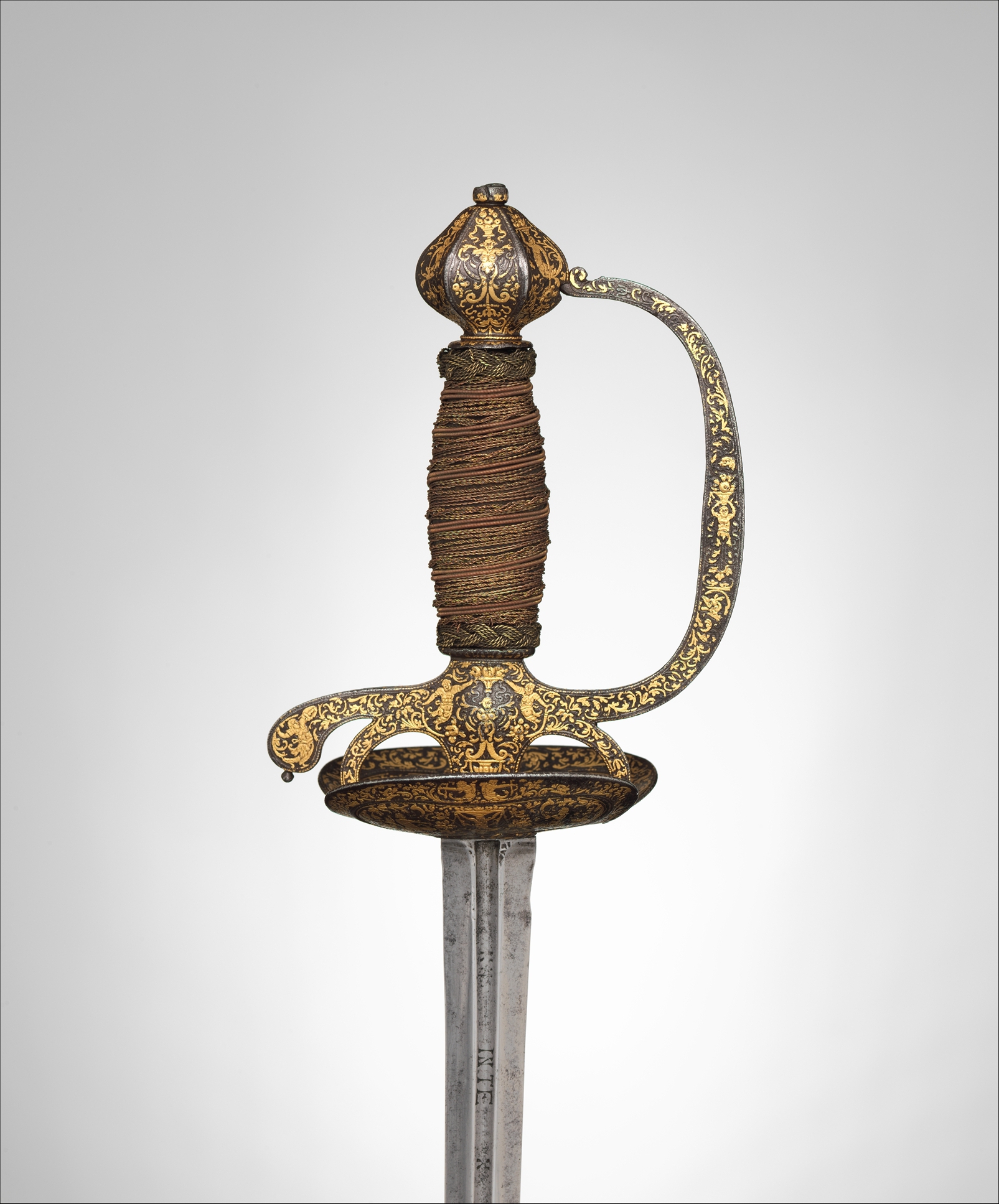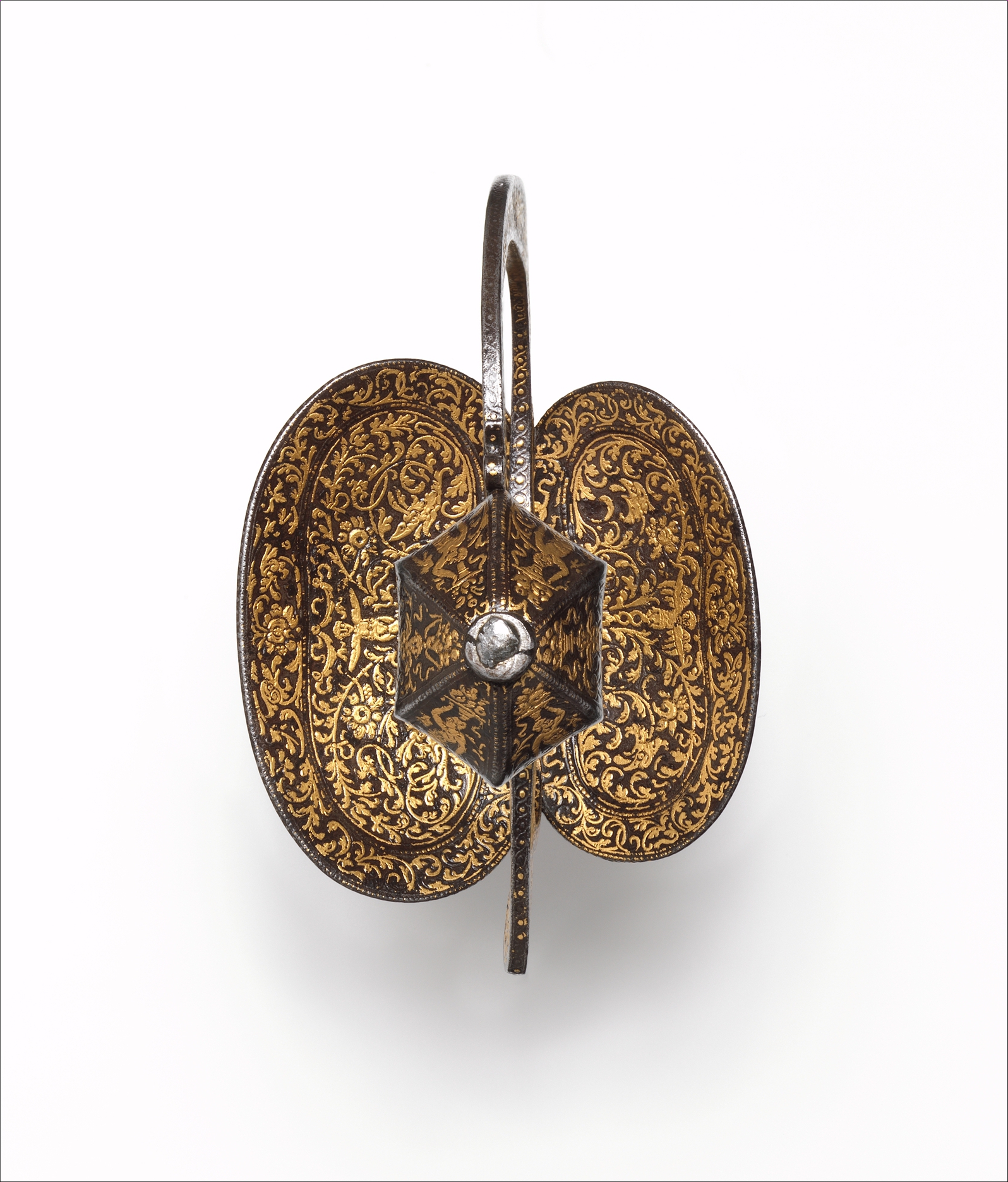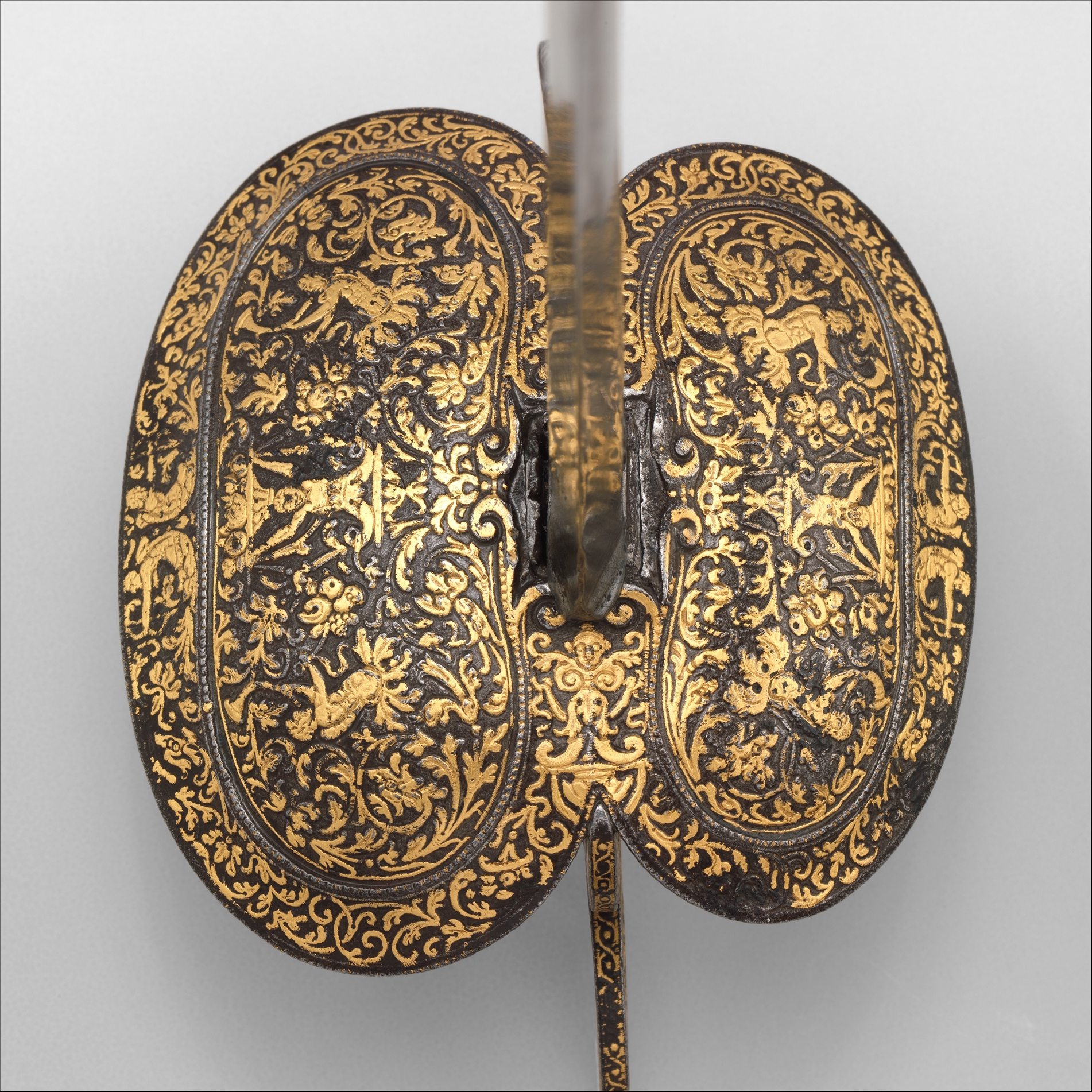Smallsword
While it was typical in Europe from at least the Middle Ages for a nobleman to wear a sword on a daily basis, not until the sixteenth century was there a pronounced difference between the swords worn with armor during times of war and those worn with civilian dress or in peacetime. During the Renaissance noblemen regularly wore long, lethal, and frequently ornate swords known as rapiers, both for self-defense and as a necessary costume accessory. In the early seventeenth century rapiers became smaller, lighter, and more refined, developing into what are known as smallswords, which continued to be worn by gentlemen until the late eighteenth century.
This early smallsword is a rare and beautiful example of the form, design, and ornamentation that distinguishes the best French swords of the early Louis XIV period. Its intricately damascened gold decoration is derived from contemporary print sources. Of the few comparable smallswords that exist, three are in current or former royal dynastic collections: Windsor Castle, the Musée de l'Armée in Paris, and the Royal Armory in Stockholm, a further indication of their quality and importance. Although highly decorated, swords of this type were still fully functional as weapons.
Due to rights restrictions, this image cannot be enlarged, viewed at full screen, or downloaded.
This artwork is meant to be viewed from right to left. Scroll left to view more.






